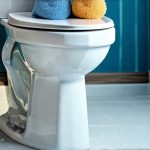Urinary urgency – that sudden, compelling need to rush to the bathroom – is an incredibly common experience for women, often impacting daily life in ways many feel uncomfortable discussing. It’s more than just a minor inconvenience; it can lead to anxiety, social isolation, and a significant reduction in quality of life as individuals modify their activities out of fear of accidents or embarrassing situations. While occasional urgency is normal, persistent or severe urgency signals something deeper may be happening, warranting understanding and proactive management. This isn’t about ‘holding it’ better; it’s about identifying the underlying causes and learning strategies to regain control and peace of mind.
Many factors contribute to urinary triggers in women, making a one-size-fits-all solution ineffective. Hormonal shifts during menstruation, pregnancy, and menopause play a significant role, as do anatomical differences compared to men, particularly a shorter urethra which makes it easier for bacteria to reach the bladder. Lifestyle choices like caffeine and alcohol consumption, dietary habits, stress levels, and even certain medications can all contribute to increased urgency or frequency. Understanding these triggers is the first step toward managing them effectively; recognizing that this is often a complex issue with multiple contributing factors helps shift the focus from blame towards empowerment and solutions. It’s also beneficial to understand how to manage sugars as part of an overall urological health plan.
Understanding Urinary Triggers
Urinary triggers aren’t always what you might think. While obvious culprits like caffeine are frequently cited, the spectrum of potential triggers is surprisingly broad. It’s important to differentiate between true urgency – a sudden, strong sensation that is difficult to suppress – and frequency, which refers to needing to urinate often but without necessarily feeling an overwhelming urge. Often, these two go hand-in-hand, creating a cycle of concern and heightened awareness around bladder function. The ‘brain-bladder disconnect’ can also play a role; sometimes the brain misinterprets signals from the body or overreacts to normal sensations, leading to perceived urgency even when the bladder isn’t full.
The psychological component is often underestimated. Anxiety about finding a bathroom, fear of leakage, and anticipatory voiding (going to the bathroom ‘just in case’) can all exacerbate symptoms. This creates a feedback loop where worrying about needing to go actually increases the likelihood of feeling urgent. Recognizing this interplay between physical sensations and emotional state is crucial for developing effective coping strategies. Furthermore, underlying medical conditions like urinary tract infections (UTIs), overactive bladder (OAB), interstitial cystitis (IC), or pelvic organ prolapse can contribute significantly to urinary urgency; a proper diagnosis from a healthcare professional is essential to rule out these possibilities. Being mindful of uti risk in daily life can be preventative.
Finally, seemingly innocuous habits can become triggers. The sound of running water, the sight of a bathroom door, even thinking about urination itself can sometimes initiate an urgent feeling in individuals who are particularly sensitive or prone to anxiety around bladder control. This highlights the power of conditioned responses and the potential for retraining the brain through behavioral therapies.
Behavioral Therapies for Trigger Management
Behavioral therapies are often the first line of defense in managing urinary triggers, offering a non-invasive approach with lasting results. These techniques aim to retrain the bladder and reduce anxiety associated with urination. – Bladder training involves gradually increasing the time between bathroom visits, even if you feel urgency, slowly expanding your bladder capacity over time. This is often done with the guidance of a physical therapist specializing in pelvic floor health. – Urge suppression techniques, like pelvic floor muscle contractions (Kegels) or deep breathing exercises, can help temporarily control the urgent sensation and delay urination.
A key component of behavioral therapy is keeping a voiding diary. This involves tracking when you urinate, how much you drink, what you eat, your activity level, and any associated urgency levels. This detailed record helps identify patterns, pinpoint specific triggers, and monitor progress over time. It’s also valuable information to share with your healthcare provider. Another useful technique is timed voiding, where you proactively urinate at set intervals, regardless of whether you feel the urge, to disrupt the cycle of frequent urination and reduce anxiety about accidents. Building trust in your body’s signals is a vital part of this process.
It’s important to approach behavioral therapies with patience and consistency. It takes time to retrain the bladder and modify ingrained habits. Setbacks are normal; don’t get discouraged if you experience a flare-up or slip back into old patterns. Celebrate small victories, focus on progress rather than perfection, and remember that even slight improvements can make a significant difference in your quality of life.
Dietary Adjustments & Lifestyle Changes
Diet plays a surprisingly large role in urinary trigger management. Certain foods and beverages are known bladder irritants for many women. – Caffeine, found in coffee, tea, and soda, is a diuretic, meaning it increases urine production. It can also irritate the bladder lining. – Alcohol has similar effects to caffeine, plus it impairs judgment and may lead to accidents. – Acidic foods like citrus fruits, tomatoes, and spicy dishes can exacerbate symptoms for some individuals.
Beyond specific foods, staying adequately hydrated is crucial, but paradoxically, drinking too much fluid can also worsen urgency. Aim for a consistent intake throughout the day, avoiding large volumes at once. Consider spreading your fluid intake evenly – small sips regularly are better than gulping down a large glass of water. Lifestyle changes like maintaining a healthy weight and getting regular exercise can also contribute to improved bladder control. Obesity puts extra pressure on the pelvic floor muscles, while exercise strengthens these muscles and promotes overall health.
Stress management is equally important. Chronic stress can tighten pelvic floor muscles, leading to urgency and discomfort. Incorporating relaxation techniques such as yoga, meditation, or deep breathing exercises into your daily routine can help reduce stress levels and improve bladder function. Finally, avoid constipation, as straining during bowel movements puts additional pressure on the bladder and pelvic floor. It’s also important to remember how to sit for optimal relaxation.
Pelvic Floor Muscle Training (Kegels)
Pelvic floor muscle training, commonly known as Kegel exercises, is a cornerstone of urinary trigger management for women. These muscles support the bladder, uterus, and rectum, and strengthening them can significantly improve bladder control and reduce urgency. However, proper technique is essential to ensure effectiveness. Simply squeezing your pelvic floor isn’t enough; you need to identify the correct muscles and perform the exercises correctly.
To locate your pelvic floor muscles, imagine you are trying to stop the flow of urine midstream (although this should only be done for identification purposes, not as a regular exercise). Alternatively, think about stopping yourself from passing gas. The sensation you feel is the contraction of your pelvic floor muscles. – Perform Kegels regularly: Aim for 3 sets of 10-15 repetitions per day. You can do them anywhere, anytime – while sitting, standing, or lying down. – Focus on quality over quantity: It’s more effective to perform a few contractions correctly than many incorrectly. Hold each contraction for a few seconds, then relax completely for the same amount of time.
It’s important to avoid contracting your abdominal muscles, buttocks, or thighs during Kegels – this indicates you are not isolating the pelvic floor muscles properly. If you’re unsure about your technique, consult with a physical therapist specializing in pelvic floor health. They can provide personalized guidance and ensure you are performing the exercises correctly. Consistency is key; it may take several weeks or months to see noticeable improvements, but the benefits of strong pelvic floor muscles extend beyond urinary control – they also improve sexual function and prevent prolapse. Managing polypharmacy can also impact bladder health, so it’s worth considering with your doctor. Additionally, monitoring urinary health in aging relatives is important for overall family wellbeing. For those experiencing pain, exploring options like pelvic pain management may be beneficial.





















